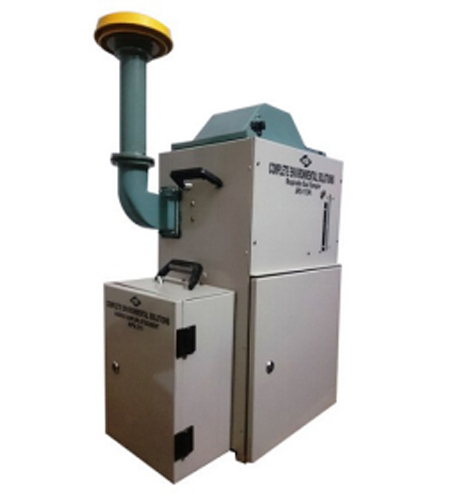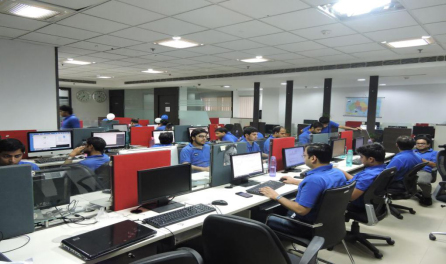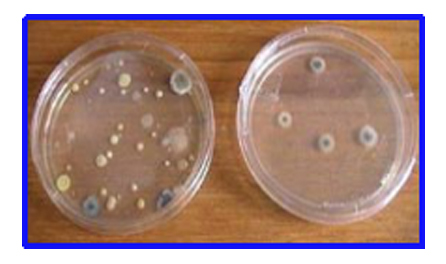A. Ambient air monitoring:
Ambient air monitoring is the systematic, long-term assessment of pollutant levels by measuring the concentration of various pollutants in the surrounding, outdoor air.
Why Ambient Air Monitoring ?
• Equipment validation
• Facilities validation
• HVAC system validation
• Cleaning validation
• Process Validation
• Analytical method validation
• Computer system validation
• Packaging validation
• Cold chain validation
What are the guidelines for Monitoring?
Under the provisions of the Air (Prevention & Control of Pollution) Act, 1981, the CPCB has notified fourth version of National Ambient Air Quality Standards (NAAQS) in 2009 (https://www.cpcb.nic.in/National_Ambient_Air_Quality_Standards.php). This revised national standard aims to provide uniform air quality for all, irrespective of land use pattern, across the country. There are 12 identified health based parameters
• RSPM / PM10 • PM2.5 • Sulphur Dioxide • Oxides of Nitrogen • Ozone • Ammonia • Carbon Monoxide • Benzene • Lead • Nickel • Arsenic • Benzo (a) Pyrene

B. Indoor Air Monitoring:
Indoor Air Quality (IAQ) refers to the air quality within and around buildings and structures, especially as it relates to the health and comfort of building occupants. Understanding and controlling common pollutants indoors can help to reduce your risk of indoor health concerns.
What are different Guidelines for indoor Air Monitoring:
• ASHRAE Standard
• Indoor Air Pollution (Draft Guidelines) as per CPCB
• Indoor Air Quality in commercial and Industrial Buildings- OSHA
Pollutants covered in IAQ monitoring
• Primary pollutants: RSPM including PM10, PM2.5 & PM1, VOC’s
• Secondary Pollutants: Carbon Monoxide, Oxides of Sulphur, Oxides of Nitrogen
• Special Parameters: Ozone, Formaldehyde, Microbial agents
• Ventilation parameters: Carbon Dioxide, Air Flow, Simulation
• Comfort Parameters: Temperature, Relative Humidity

C. Workplace Monitoring:
Healthy and pollution free work environment is very important for proper functioning of human being. OHSAS and NIOSH guidelines are important for workplace monitoring Important pollutants are SPM, RSPM, Acid fumes, Alkali fumes, Welding fumes etc. Monitoring parameters are depend upon the actual process.

D. Source Emission Monitoring:
Source emission refers to emission from stack. A stack is a structure for venting hot flue gases or smoke from a boiler, stove, chimney, furnace or fireplace to the atmosphere.
What is stack Monitoring ?
It is a process to measure emission of industrial waste or pollutants generated from fuel burning or process emitted into atmosphere. The pollutants emitted from stack can be solid, gaseous, liquid organic or inorganic.
What are Objectives of Stack Emission Monitoring ?
• To determine emission levels from plant processes to ensure they are in compliance with any emission limits set by regulatory authorities to prevent macro environmental pollution
• To measure the efficiency of the control equipment by conducting a survey before and after installation
• To determine the effect on the emission due to changes in raw materials and processes
• To compare the efficiency of different control equipment’s for a given condition.
• To acquire data from an innocuous individual source so as to determine the cumulative effect of many such sources.
• To compare with the emission standards in order to assess the need for local control

Which parameters are to be checked ?
Following parameters are important in stack monitoring
• Particulate Matter
• Sulphur Dioxide
• Oxides of Nitrogen
• Total Hydrocarbons
• Caron Dioxide
• Oxygen

Compressed Air:
Compressed air is air kept under a pressure that is greater than atmospheric pressure Compressed air systems can harbor the nutrients required for microbes to grow; namely water, oil, and warm temperatures. Maintaining a dry water level of -40°F can inhibit the growth of microbes but will not eliminate them. Bacterial spores can be resistant to U.V., desiccation or heat and can remain dormant for long periods, thus creating the potential for a reccurring problem. Further, there is another nasty contaminant known as biofilm. Biofilm can have negative effects on the compressed air quality as well. Biofilm creates a safe haven for bacteria and can provide nutrients to bacteria under conditions that might normally be considered too harsh.
Applications:
• Instrument Air, Paint Spraying, Powder Coating, Packing Machines
• Pharma industry
• Food Industry, Dairy Industry, Laboratories
• Hospitals- Breathing air/Medical air quality
• Outdoor Pipelines, Pneumatic Transport of Hygroscopic Material, Breweries, Chemical & Pharmaceutical Industry, Electronics Industry.

Standards for various compressed air applications- Chemical & Microbiological parameters:
should be tested as per following standards:
• ISA-S7.0.01-1996 and GMP for validated systems
• SO 8573 Part 1 – Part 7
• ISPE (International Society for Pharmaceutical Engg.)Good Practice Guide - Process Gases, 2011
• ANSI/ISA-S7.0.01-1996
• USP/IP/BP.
 Video About Autocal
Video About Autocal